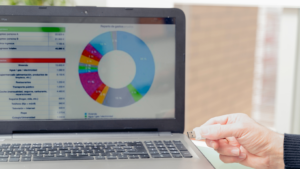Unlocking the power of data is key in today’s market research. And what better tool to tap into than Google Trends? It’s a treasure trove of information, revealing what the world’s searching for and offering invaluable insights on consumer behavior.
This article will delve into the ins and outs of how to use Google Trends for market research, demonstrating how it can be harnessed to drive your market research. Whether you’re a seasoned analyst or a newbie entrepreneur, you’ll find this guide invaluable. So, let’s embark on this journey to discover how Google Trends can give your business the competitive edge it needs.
How To Use Google Trends For Market Research

How to use Google Trends for market research, an online analysis tool, sheds light on the prevalence of specific search terms in Google Search. It presents internet searchers’ activity over time, across multiple geographies, and within numerous categories. An example can be tracking the phrase “Christmas gifts” to observe a spike in its search frequency around December every year. Moreover, Google Trends enables an examination of several terms simultaneously, offering valuable comparisons. For instance, putting the words “tea” and “coffee” side by side, we find different search patterns and peak times.
Setting up Google Trends for Market Research
Having recognized the power of how to use Google Trends for market research, it becomes essential to leverage this tool efficiently. This section explores the crux of getting started with this resource-laden tool, starting with creating a Google account and navigating its user-friendly dashboard.
A Google account stands as the gateway to using Google Trends for market research. To create one, a user navigates to the Google Accounts homepage. Here, clicking on the “Create account” button opens up a form which asks for basic information – including, but not limited to, name, email address, and a password. Upon successful filling and submission, users receive an email for verification. Verification successfully completed, users acquire an account, providing them full access to numerous Google features, not least Google Trends.
Advantages and Limitations of Using Google Trends in Market Research

Harnessing the power of how to use Google Trends for market research provides ample benefits, although, like any tool, it’s irrefutable that it houses limitations within its insights. A deeper dive into its advantages and shortcomings paints a clearer picture.
Advantages of Google Trends
Google Trends projects as a vital tool for market research due to its real-time, unbiased, and multi-faceted data. Agencies harness this cost-effective tool, reporting trending keywords, gauging their popularity across diverse markets, and comparing relative interest over time. It helps define consumer behavior patterns, enabling marketers to align strategies accordingly and yield better results.
- Real-time Data: Google Trends provides updates as quick as within the hour, facilitating immediate responses to market changes.
- Global Reach: It presents data that cover different regions globally, assisting in identifying potential markets for expanding businesses.
- Cost-effective: Unlike paid market research tools, Google Trends offers insights free of cost, proving beneficial for small businesses and startups.
- Historical Data: Google Trends maintains data from the past 16 years, offering historical trend comparisons for long-term strategic planning.
- Seasonality Insights: It’s an excellent tool for analyzing seasonal variations, enabling marketers to plan campaigns efficiently around peak search times.
Limitations of Google Trends

Despite its numerous advantages, the limitations of Google Trends are worth mentioning. It’s crucial to understand these restrictions to interpret the data correctly.
- Lack of Quantitative Data: Google Trends provide relative data, not absolute search volume, which might impede exact market size estimates.
- Limited to Search Data: It only considers data from Google Search, ignored other platforms like Bing, Yahoo, or direct website searches, which might present a skewed perspective of online behavior.
- User Bias: Google Trends reflects the behavior of internet users who may not represent the entire market, especially for products targeted at non-internet users.
- Privacy and Data Concerns: Since data accumulates from search behavior, some argue that it raises issues concerning user privacy and data usage.
- Missing Context: Google Trends does not consider the context behind each search, making it challenging to convert raw data into actionable insights at times.



